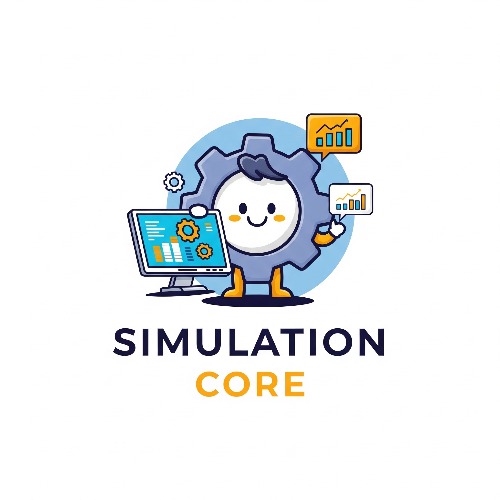🧪 [Plant Simulation Study #02] – Vacuum Transfer Robot Demo with 3D CAD Motion

🎬 Overview
In this post, I’d like to introduce the second demo built using Plant Simulation.
This model simulates a vacuum transfer robot commonly used in semiconductor and display industries.
The focus of this demo is to show how to create equipment libraries using standard 3D CAD models within Plant Simulation, and how to implement realistic robot motion.
Before you begin, make sure you have your 3D CAD model and structure ready.
- Purpose: Building equipment libraries using 3D CAD animation in Plant Simulation
- Used Features: Method, Station, Graphic Animation, 3D object control, etc.
🎥 Demo Video
💡 The following video shows the actual simulation in action.
👇 Click the link below to watch:
🔗 https://youtu.be/PzqqgF9sDKw
🛠️ Key Simulation Structure
| Process Flow | Buffer → Dual Arm Lower → Station → Buffer → Dual Arm Upper → Station (repeated depending on Work type) |
| Routing Strategy | Fixed routing order (static configuration used in this demo) |
| Modeling Detail | Each robot joint is animated separately |
| Used Features | Method, MU Attribute branching, ExperimentManager for extended testing |
🧩 How to Animate a 3D CAD Robot
1. Create animation graphics in your 3D CAD structure

- Set animation parameters for each joint individually
- Understand the tree hierarchy in your CAD model – it typically follows a BOM structure
- Define joint speeds and specify whether it’s linear or rotational movement
2. Control motion using Method logic

- robot._3D.poses.moveTo("work_load") robot._3D.getObject("axis").moveTo(0.05)
- These are the building blocks for complex robot motion inside Plant Simulation.
robot._3D.poses.moveTo("..."): Controls predefined poses
getObject().moveTo(...): Controls individual joint movement directly📈 Result & Insight
This simulation demonstrates how 3D CAD animations can be integrated into Plant Simulation models for more realistic and visually engaging behavior.
Rather than using basic library objects or static stations, consider leveraging detailed CAD structures to visualize robot motion.
This is especially valuable when presenting to executives, clients, or during digital twin deployments — helping communicate system behavior clearly.
🧠 Final Thoughts
This demo focused on animating a vacuum transfer robot using 3D CAD and basic motion control methods.
Although this example is beginner-level, mastering these fundamentals will enable you to animate dozens of components in future projects with confidence.
When building large-scale or client-facing models, this skill becomes essential for smooth development and communication.
'Plant Simulation > Study' 카테고리의 다른 글
| [Plant Simulation Study #03] – Automated Packaging & Palletizing Line Demo (0) | 2025.07.14 |
|---|---|
| [Plant Simulation Study #03] – 자동 포장 팔레타이징 라인 데모 영상 , Packaging and Palletizing (0) | 2025.07.14 |
| [Plant Simulation Study #02] – 진공 이송 로봇 데모 , 3D CAD 움직임 구현 (0) | 2025.07.14 |
| [Plant Simulation Study #01] – Body Welding Line Demo (0) | 2025.07.14 |
| [Plant Simulation Study #1] - 차체 용접 라인 데모 (0) | 2025.07.13 |
